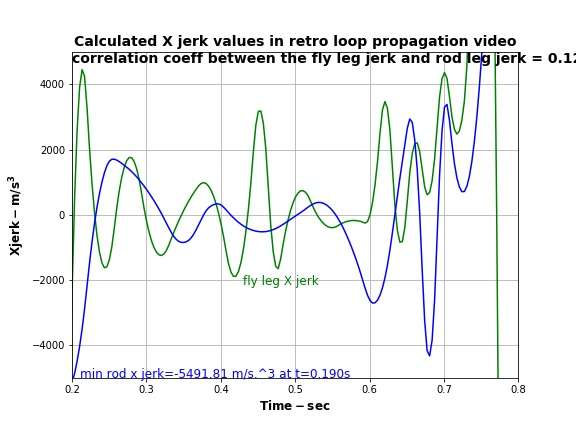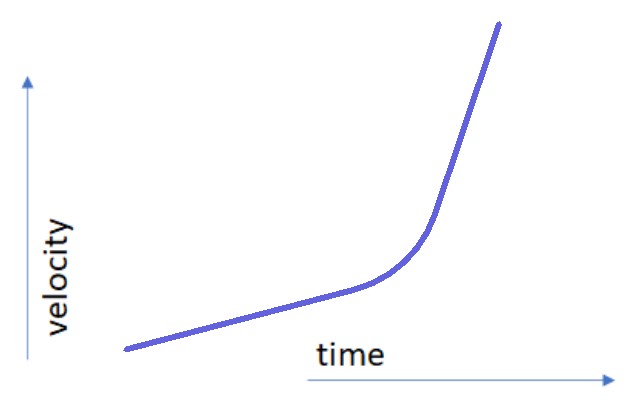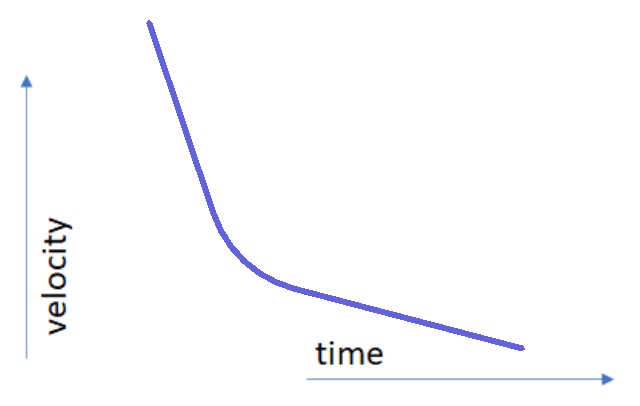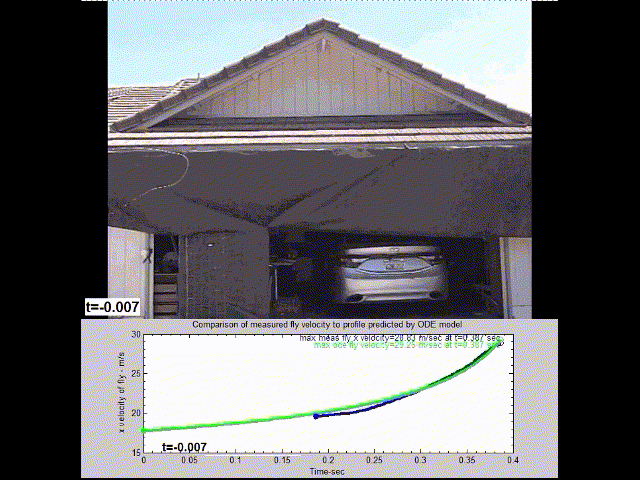gordonjudd wrote: ↑Mon Sep 14, 2020 3:08 pm
A jerk is readable in Gordy's pull-back cast rod leg velocity and at the same time an opposite direction jerk is readable in the fly leg velocity - centripetal force explains it for me.
Dirk,
Not only is it readable, the jerk derived from the measured velocity profiles in that pull back cast can be calculated as shown below.

Since the calculated correlation coefficient between those two jerk curves was only 12%, I don't think you can cherry pick a time range that fits with your centrifugal force theory while ignoring the 88% of the time when there is no correlation between the two jerk curves.
Invoking jerk as an explanation for the delay in the fly legs velocity increase relative to the start of the pull back is a derivative too far for me.
Gordy
Hi Gordy
I transferred the reply to
the above post to this thread, which is where this specific difference arose.
I am sure you agree, that graph is gibberish. Progressive derivatives of noisy data progressively become a cacophony. We can, though, from a velocity profile read acceleration (slope, indicating direction and intensity of net force acting on the object) and changes in acceleration, which is jerk (change in slope, indicating a change in net force).
From experiments, we want to learn if and when, and if we’re lucky, by how much, a pullback action affects the fly leg’s velocity.
We may see at some point a change in the fly leg’s velocity slope (acceleration), indicating a change in net force acting on the fly leg. We may see at some later point that the initial negative (decelerating) fly leg velocity slope has incrementally been changed to positive (accelerating), indicating net force direction change. This latter observation is the criterion you propose as proof that a pullback action has affected the fly leg’s velocity.
One problem with that criterion is that, without a carbon-copy non-pullback reference cast to compare with, we cannot experimentally confirm whether a fly leg’s acceleration was due to a pullback action or not. Non-pullback casts’ fly leg velocity profiles often show acceleration toward the end of roll-out. In fact, the following figure was lifted from a cast without pullback:
I am sure you agree that there is no way to tell if, or when, a pullback was responsible for the acceleration that occurred.
Another problem with that criterion is that changing opposing or assisting forces (changing the net force) acting on an object can affect its velocity without ever achieving a reversal in net force direction and hence a reversal of acceleration/deceleration. Pullback effect may, while reducing a fly leg’s deceleration, remain insufficient to accelerate that fly leg. In such a case, do we say the pullback had zero effect?
If a change in the slope of a velocity profile is sharply defined, we can read from that a non-gradual net force shift, an explicit event in time. With a velocity profile such as this:

- AC_1.jpg (16.11 KiB) Viewed 3086 times
Newton tells us that up to the kink, the object is accelerating at a constant rate, a constant positive net force acting on it in the direction of travel. Then, at the time indicated by the kink, the net force acting in the direction of travel increases and steepens the velocity slope (the acceleration). A
positive change in the net force occurs during the kink.
And with a velocity profile such as this:

- AC_2.jpg (15.75 KiB) Viewed 3086 times
Newton tells us a constant negative acceleration, a constant opposing net force, changes during the kink to constant less negative acceleration, less opposing net force. A
positive change in the net force occurs during the kink. Thanks to Newton, we know that either the opposing force diminished or the assisting force increased at the kink.
From your experiments, both legs’ velocity profiles exhibit quite defined changes in slope, and these changes correspond in time. By lack of alternative observable events which could explain the fly leg’s velocity slope changes, we can deduce that events of increased force acting on the fly leg relate directly to events of increased rod leg pullback.
All the best,
Dirk


